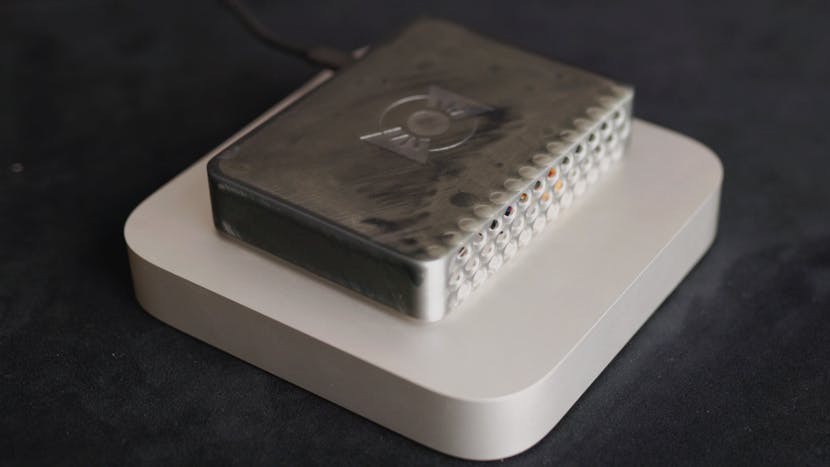
Snazzy Labs' Mac Mini Mini Uses an External PSU to Squeeze It in a 3D-Printed Case a Fifth the Size
from hackster.io
Modern computers are often considerably smaller than the cases that hold them, and that's true even for Apple's latest and already-fairly-compact Mac Mini — which is why the team at Snazzy Labs has developed the Mac Mini Mini, a 3D-printed housing that reduces its size by nearly 80 percent.
"Back when Apple introduced Apple Silicon at WWDC 2020 they also launched a DTK — a Developer Transition Kit — so the devs, the makers of your favorite apps, could move those applications away from Intel to Arm," explains Snazzy Labs' Quinn Nelson. "Now the DTK was kind of a weird rigmarole of hardware: It was an A12Z iPad processor inside of a Mac Mini chassis. When the M1 computers debuted later that year the Mac Mini retained its same form factor — the same case it had used since 2010."
The hardware inside that case, however, is considerably smaller than when it launched as an Intel-powered device 12 years ago — which is what gave Nelson the idea to shrink things down to size, cracking open Apple's device and extracting its innards for transplantation into a considerably more compact 3D-printed chassis.
"The M1 [Mac Mini] is mostly comprised of components from the old Mac Mini's parts bin," Nelson explains, "the largest of which is this hilariously overkill 150 watt power supply. The same holds true with the cooling assembly. With these monster components removed from the case we're left with a very svelte logic board that has all of its IO [Input/Output] soldered directly onto the PCB."
To build the new device — "Mac Nano? Mac Mini Mini? Tiny Mac? Call it whatever you want," Nelson says, but it’s awesome" — Nelson enlisted the help of some friends to replace the bulky internal power supply with a magnetically-linked power brick taken from a Microsoft Surface with the connector swapped out for a MagSafe 2.
The finished machine is, excluding the size of the now-external power adapter, considerably smaller than the original: 78 percent smaller, Nelson claims. Files for printing the case have been published to Prusa Printers, along with a parts list; wiring schematics, meanwhile, are "coming soon," says Nelson.



Leave a comment